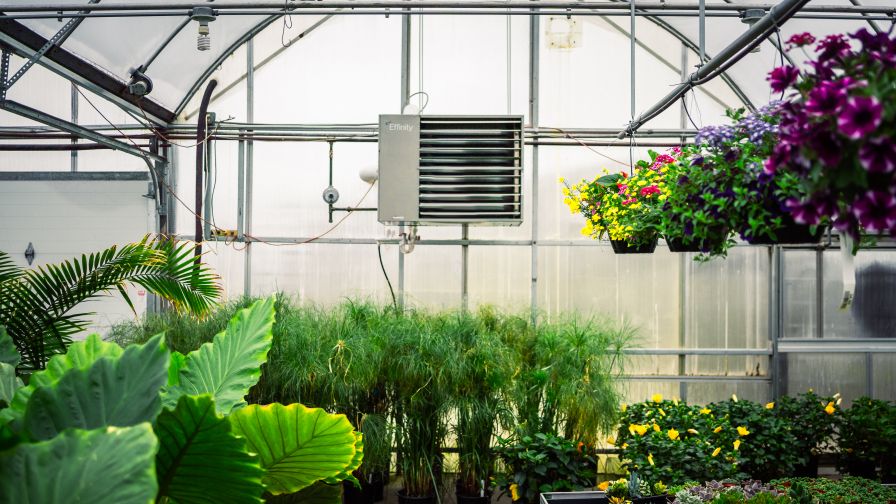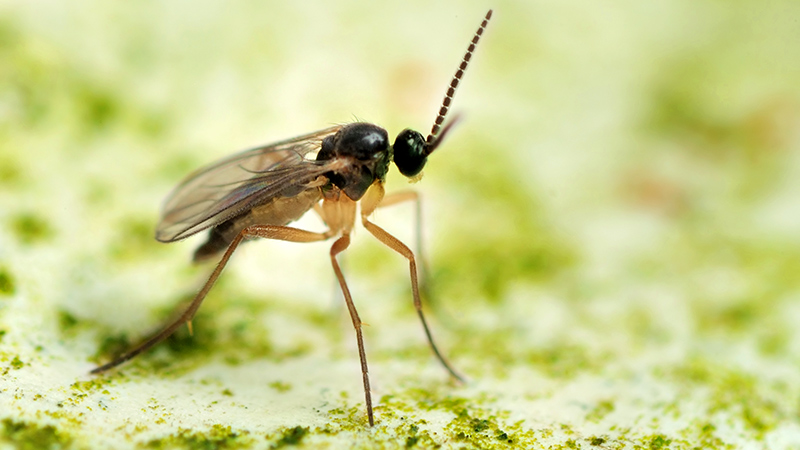Prep Your Greenhouse for Winter With Improved Thermal Efficiency

Photo: Modine
The ongoing demand for fresh fruits and vegetables year-round continues to grow with each passing day. As consumers look to incorporate more fruits and vegetables in their diet, commercial greenhouses are becoming more vital to the United States economy. But, according to the United States Department of Agriculture, the total national supply of fresh-market vegetables declined 3% in 2022. Domestic production, which accounts for nearly two-thirds of fresh-market vegetables, declined 3% in 2022 as well.
With production in a slight decline since 2022, it will be vital for commercial greenhouses to continue production into the winter months to meet the demands of consumers. Part of that process is having a reliable heating solution in place. While there are multiple manufacturers who develop these solutions, one thing that should be kept top-of-mind is thermal efficiency.
Thermal efficiency is defined as the efficiency of a heat engine measured by the ratio of the work done by it to the heat supplied to it. This ultimately means the ratio of the net work output to the heat input. If too much heat is wasted during the heating process, it could cost companies more money while developing a conditioned growing space for plants when temperatures drop. In addition, they are increasing CO2 emissions because the heating unit is working more to maintain heating requirements.
One primary way commercial greenhouses can be better prepared is by selecting a heating solution that meets heating demands while decreasing energy usage and CO2 emissions.
Improved Thermal Efficiency
When it comes to controlling the environment inside a commercial greenhouse during the winter, energy can quickly become a large expense. From temperature to other HVAC demands such as dehumidification, equipment tends to work harder during that timeframe. For heating, having a solution that improves efficiency can be a major benefit for facility managers. While heat pumps can be good alternatives, unit heaters are a great fit for greenhouses because of their size and the ability to use more than one to satisfy a need. In many cases, unit heaters with tubular heat exchangers result in better thermal efficiency and durability. Finding a unit that can also tie into your building management systems will allow facility managers to remain cognizant of temperature and develop a plan for efficiently running the system.
While selecting a unit that promotes efficiency is a must, it’s just as important to properly position unit heaters to prevent heat from escaping the greenhouse. The proper placement depends heavily on the layout of your facility. But if you are using more than one unit heater, positioning them opposite of each other helps circulate the warm air while minimizing the amount of heat that exits the greenhouse. By lowering the amount of wasted energy, you are improving thermal efficiency and lowering both your energy bill and CO2 footprint.
Preventative Maintenance
An often-overlooked aspect of improving thermal efficiency is preventative maintenance. If a unit isn’t regularly serviced, commercial greenhouse owners are missing out on an opportunity for better performance and efficiency. A unit with a dirty motor or damaged parts will likely result in less efficiency or worse. The unit could be at risk for failure, which would negatively impact production during the cold months. It’s important to develop a plan that includes preventative maintenance to ensure your system is operating at optimal levels.
During an inspection, facility managers can expect the certified professional to inspect the combustion chamber and burner for dirt buildup, corrosion, or damage; clean the chamber and burner to maintain proper operation; check exhaust vents and flue systems for blockages, leaks, or corrosion; test safety controls such as limit switches and pressure switches to ensure they are functioning properly; inspect the heat exchanger for cracks or corrosion; and much more.
These planned inspections will go a long way in maintaining or improving thermal efficiency during the winter.
Keep the Plants Growing
To maintain or increase production when temperatures drop, heating solutions are a necessity for commercial greenhouses. When running these machines, it’s important to keep thermal efficiency in mind to help decrease energy usage and CO2 emissions. Opting for a unit heater with a tubular heat exchanger can provide positive benefits in the energy usage department. Proper positioning also plays a vital role in improving efficiency as well. Being proactive with maintenance is also paramount to ensure systems are running at optimal levels. In the end, heating solutions are a necessary component of running a greenhouse. So, facility owners should do their best to maximize all the equipment needed for positive results. That includes enhanced efficiency from the heating solutions.









